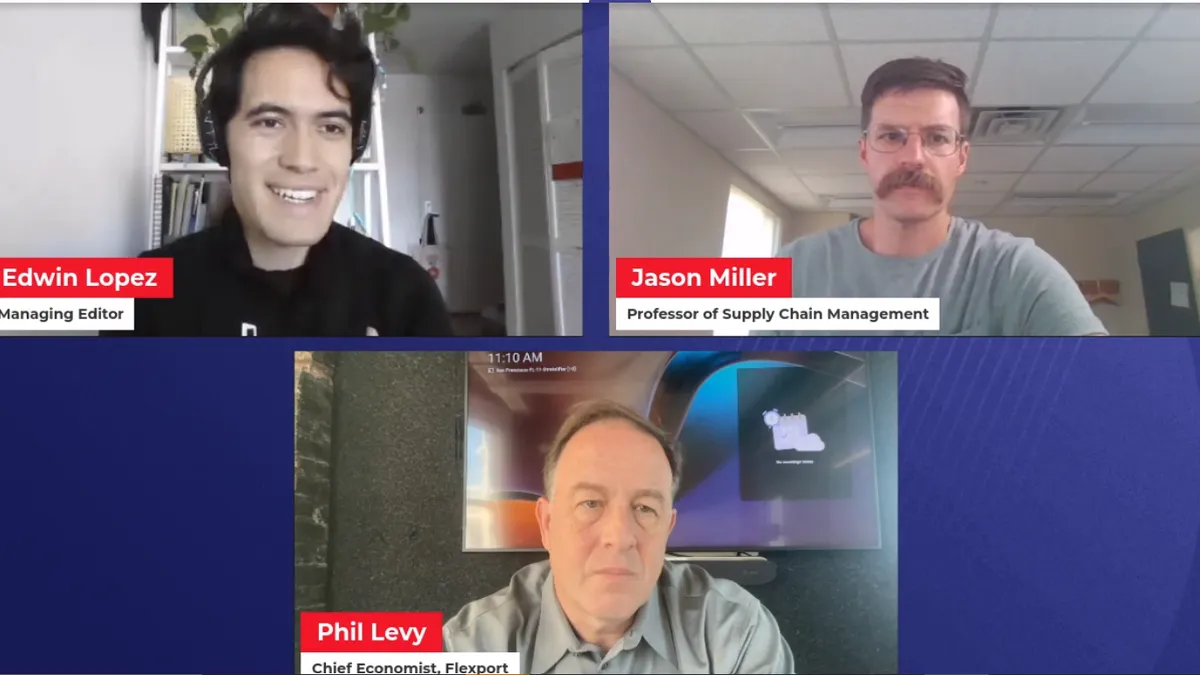Editor’s note: This story is part of a series highlighting takeaways from a July 11 event hosted by Supply Chain Dive, Transport Dive and Manufacturing Dive. Register here to watch the replay on demand.
While manufacturing activity seems to be picking back up in the U.S., output has not returned to pre-pandemic levels, Jason Miller, supply chain management professor at Michigan State University, said on Tuesday during Tuesday’s virtual event “Supply Chain Outlook: Trends and Risks To Watch in 2023.”
Looking at industrial production in specific sectors, Miller said that while motor vehicle parts production and food manufacturing are doing well, other sectors such as housing, paper, chemical, plastic, machinery and steel are still down.
“So there is still, in a lot of sectors, a lot of softness on the manufacturing side of things,” Miller said.
Still various sectors are affected differently by the current economic headwinds, he added. Some sectors, like concrete manufacturing, have been buoyed by the passage of the Bipartisan Infrastructure Law and the investment its spurred.
“You see production of concrete in the United States is at the highest level since before the global financial crisis,” Miller. “That's a type of industry that benefits from this.”
In some sectors that are seeing particularly strong growth, such as chip manufacturing, Miller cautioned not to over-hype the data on investment in plant construction.
“It's breaking every record by a long, large amount compared to before COVID because that data is just being so skewed by semiconductor plants and battery plants that are super expensive on the $1-per-square-foot basis,” Miller said
As more manufacturers set up shop in the U.S., other experts at the event noted a gap in the skilled labor market to fill both factory floor and engineering jobs, Erik Mattson, director at AlixPartners, said.
“On the maintenance side, we’re seeing a lot of manufacturers start to move into a run-to-failure type mode, because they can’t fill the ranks of skilled supervisors, managers and plant leaders to a degree that we really haven’t seen in a long, long time,” Mattson said. “So from a manufacturing standpoint, I think that’s a significant risk for the next six months to 12 months to understand how do we improve that pipeline of leaders in our manufacturing plants to take on a lot of those nearshoring activities.”
A shortage of talent can have dire impacts on a company’s operations and product quality, which can be an overlooked risk facing production and supply networks, said Balika Sonthalia, senior partner at Kearney. Sonthalia noted she saw this happen during the pandemic, when companies rushed to meet demand spikes with strapped staffs and were forced to cut corners.
“People had to take shortcuts,” Sonthalia said. “You didn’t have a choice but you had to potentially get things out fast and a few steps were missed. That could be a big risk.”














